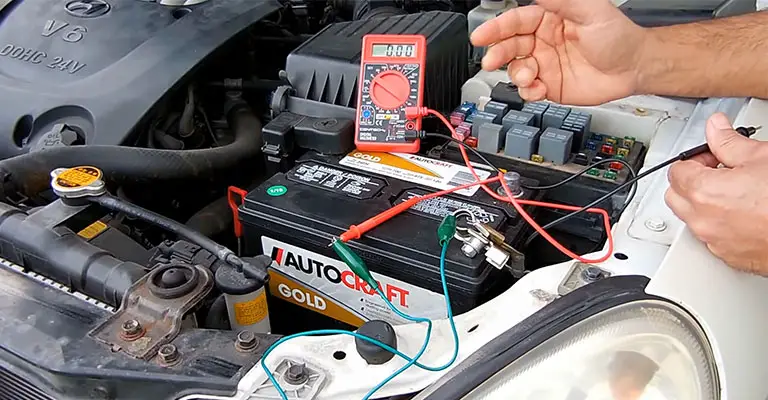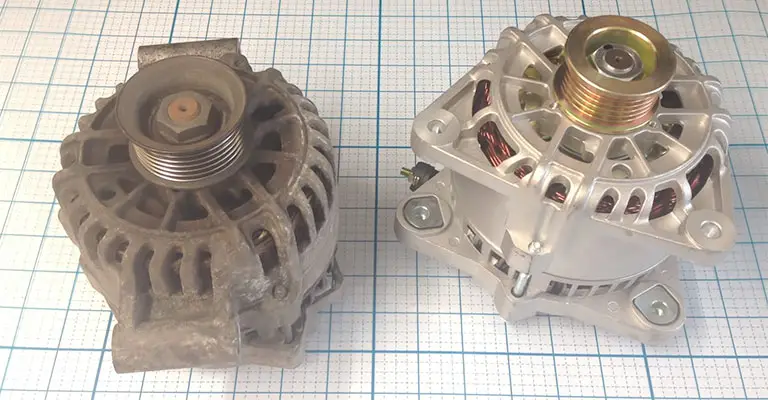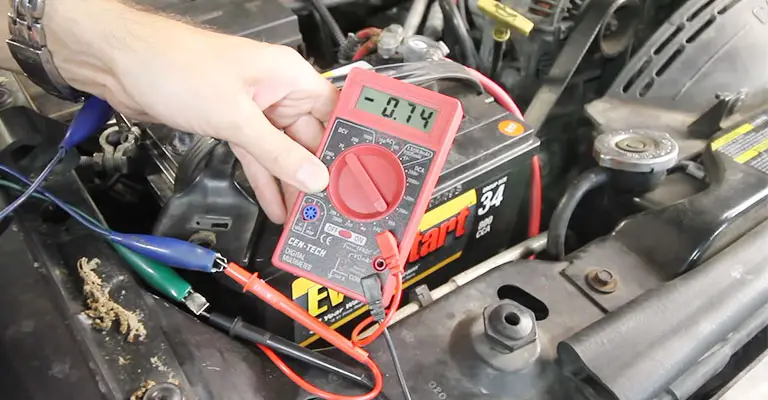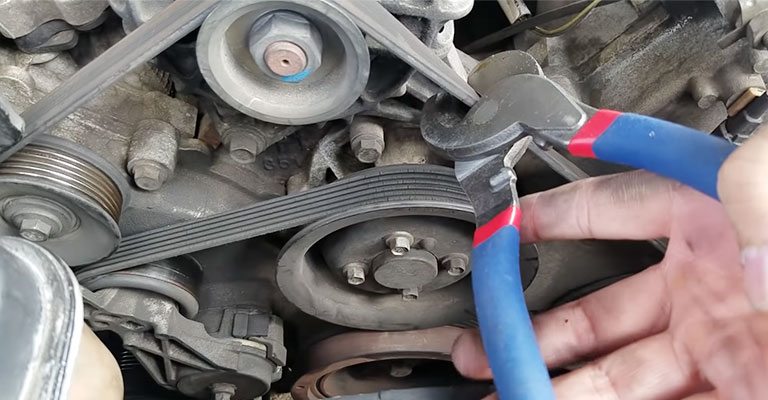Imagine that you’re running late for work, and your car isn’t starting up because of a dead battery. Sounds pretty troublesome, right? Most modern vehicles prevent such incidents with the use of sophisticated systems.
In these vehicles, a ‘Service Battery Charging System’ or ‘Check Charging System’ error message is displayed immediately after an issue is detected in the charging system. The warning alert could be triggered by faulty batteries, defective alternators, or even loose/worn belts.
Ignoring the error message may prove to be dangerous, though; worst-case scenario, you could get stranded in the middle of nowhere!
In this article, we’ll discuss battery charging systems, the reasons why the system may fail, and how to resolve them.
What Is A Battery Charging System?

The charging system of a vehicle is responsible for providing electricity to the starter motor as well as other electrical accessories, such as the headlight and backlight, glass defroster, and audio system.
A charging system’s main components are its battery, ECU (Electronic Control Unit), and alternator. Older vehicles came with a voltage regulator as well.
The battery powers the starter motor to start the vehicle’s engine. An alternator works by recharging the battery once the engine is on and producing electricity for the electrical accessories.
In brief, a fully functional charging system is needed to power lights, audio systems, and all other electrical components of the vehicle when its engine is running.
What Does Service Battery Charging System Mean?
A Check Charging System or Service Battery Charging System error message indicates an issue within the charging system. Whenever this message comes up, it means that the vehicle is powered solely by its battery.
If the problem persists, the battery won’t recharge and will run down to a dead battery soon.
Driving around with the warning message on could also lead to a ton of trouble on the road.
Therefore, it is advisable to get the issue resolved as soon as the error message shows up.
What Causes Charging System Problems?

Issues within the charging system of a vehicle could originate from many places.
Generally, the problems can be located within the alternator, battery, drive belts, battery clamps, wiring, and computer system.
Although we’ll get to more details regarding this in the next section, here are a few tips that may help –
- If you hear a ‘clicking’ sound when trying to ignite the engine, the vehicle’s starter may be broken.
- When all electrical components (e.g., lights and audio systems) work, but the engine doesn’t start, the culprit could be a defective ignition switch, starter motor, blown fuse, or a dying battery.
- After getting a jump-start, you should leave your vehicle turned on for at least 10 minutes to recharge the battery.
- A failed/worn-out drive belt will prevent the alternator from powering electrical components properly.
- Always keep the battery clamps clean and free from corrosion.
Service Battery Charging System – Causes & Fixes
Unless you’re experienced with working on cars, it will be hard to identify the issues within a battery charging system. Electrical components are sensitive, and you should visit a mechanic if you aren’t sure about what to do.
With that being said, here are some reasons why the Service Battery Charging System error may show up and how to resolve them-
Defective Alternator

A faulty alternator is most often the culprit for this error message.
A defective alternator won’t charge up your battery, and it will provide less than sufficient electricity to the electrical accessories of the vehicle.
How to Resolve
To test if the alternator is working properly or not, follow these steps –
- Turn on the engine and switch off all electrical components.
- Engage the ‘N’/Neutral gear and put on the parking brake/e-brake.
- Use a battery tester or multimeter for a no-load test; set the battery tester in ‘Ampere’ mode and connect the positive and negative leads to the alternator’s positive and negative leads, respectively.
- Observe the battery tester and see if the reading increases while the engine runs at 2,000 RPM. If the output doesn’t change significantly, you’ve found an issue with the alternator.
- Next, use the battery tester for a load test; set the battery tester in ‘DC Voltage’ mode and set it to the lowest voltage setting above 15V. Leave the leads as they are, i.e., positive and negative leads to the positive and negative alternator terminals.
- Switch on some electrical accessories such as the lights or the radio/audio system.
- After leaving them on for about 2-3 minutes, the battery tester should show readings around 13.5-14.5 volts. If the reading is any lower than 13 volts or higher than 15 volts, the alternator may be faulty
- At this point, you’ve confirmed that you’ll need to get the alternator replaced. If you aren’t sure how to do it, your best bet would be best to visit a mechanic.
Battery Problems

If your battery runs low or goes bad, the Service Battery Charging System error may show up.
But this could also happen due to corrosion on the battery’s terminal connections. Make sure that the terminals are clean and the connections are tightened properly.
How to Resolve
You should still inspect the battery condition with a battery tester or multimeter. You can test the battery with the following steps –
- Switch off the engine and all electrical accessories.
- Set the battery tester to 20V DC.
- Connect the battery tester’s positive and negative leads to the battery’s positive and negative terminals, respectively.
- If the reading shows below 12.4 volts, the battery may need a charge, or it may also be faulty.
- To be sure that the battery needs to be replaced, do a cranking test; switch off the engine and all electrical accessories.
- Disconnect/Disable the ignition or fuel system, as we’ll just be cranking the engine, not turning it on.
- Switch on the ignition for around 15 seconds and observe the readings. If the voltage reading drops below 9.6 volts, it indicates a weak/failing battery.
- Visit a mechanic to recharge the battery and see if it works. If it fails again, you’ll need to replace it with a new battery.
Damaged Drive Belt

A worn-out drive belt will prevent the alternator from working properly. This can lead to an error message showing up.
How to Resolve
Before you can check for damages on the drive belt, you’ll have to open it. In order to do so, follow these steps –
- Locate the adjustment nut and loosen it. It is usually on the alternator mount or on a different pulley wheel. Some engines use a spring tension system that you’ll have to pull back to remove the belt.
- Check the drive belt for cracks or other visual damages. Next, inspect the pulley wheels and see any sideways movement. To do this, spin the pulley wheels and check if the bearings are rotating properly.
- If you’re certain that the drive belt needs to be replaced, get the correct belt for your vehicle model.
- Put in the new drive belt the same way you’ve opened the old one. Make sure it is properly seated in the grooves, as not doing so means that the belt will come off the pulley wheels.
Worn-out Wires & Loose Connections
Corroded wires and loose electrical connections could also lead to the error message showing up.
Ensure that all the wirings of the alternator and battery connections are tight. While at it, also inspect the fuse box for burnt/blown fuses.
If a wire is damaged, make sure to replace it, as it may lead to further complications.
Malfunctioning Computer System
Once you’ve checked everything and confirmed that the alternator, drive belt, and the battery is running well, the likely cause of the error message could be a malfunctioning computer system.
Since diagnosing computerized systems is a complicated process, you should take your vehicle to a mechanic.
Frequently Asked Questions
- What causes the charging system problem?
It could be caused by several reasons, but the common problems are a broken alternator, a worn-out drive belt that slips, or a failing battery.
If the alternator functions properly and the belt fails at spinning the pulley wheel fast enough, the voltage output may drop and cause a charging system problem.
- How can I tell if I have a bad alternator?
There are several signs of a failing alternator; some of them are –
- Dim or excessively bright lights
- Failing battery
- Malfunctioning electrical accessories
- Frequently failing to start the engine or stalling it
- The smell of burning wires or rubber
- Is it safe to drive my car with the battery light on?
No, it is actually unsafe to drive with a car’s battery light on. Issues that cause the warning light, such as a failing battery or defective alternator, will also cause your vehicle to lose power. This will lead to your car not operating as it would normally.
Final Thoughts
With all that being said, you should now know why the service battery charging system error shows up and what you can do to resolve it. If you’re still not sure about what to do, you should visit a certified mechanic to get the issue fixed.
Leave a Reply